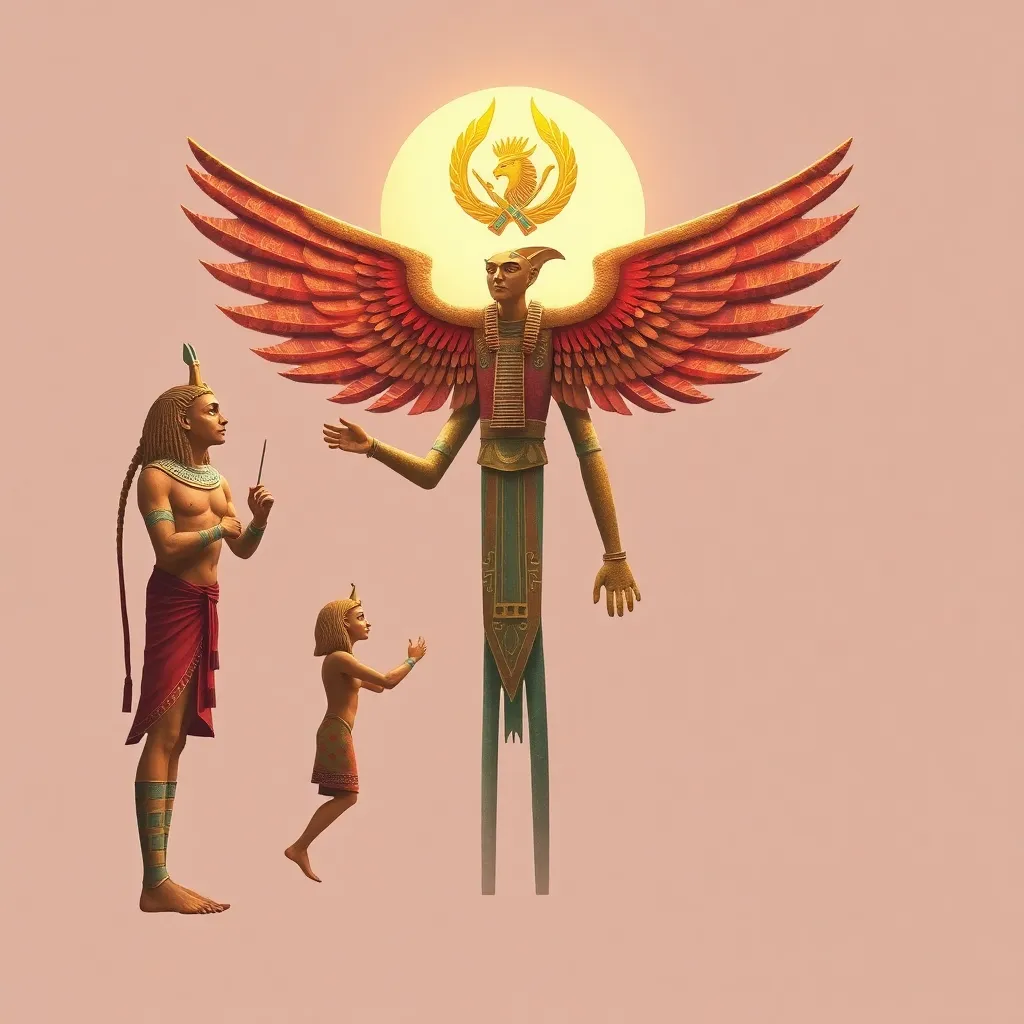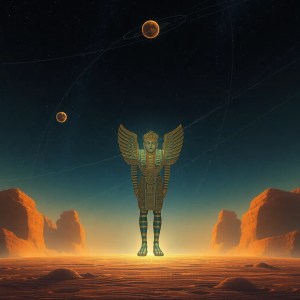The Aten and the Cycle of Life: Myths and Teachings
I. Introduction: Understanding the Aten
The Aten is a significant deity in ancient Egyptian religion, often represented as the sun disk that radiates life-giving energy. Revered during a pivotal period in Egypt’s history, the Aten embodies concepts of creation, sustenance, and the cyclical nature of existence. This article explores the myths and teachings surrounding the Aten, highlighting its importance in the context of life and death, and examining its lasting influence on spirituality and environmental awareness today.
II. Historical Context of the Aten
A. Emergence of the Aten during the reign of Akhenaten
The Aten rose to prominence during the reign of Pharaoh Akhenaten (circa 1353–1336 BCE), who is credited with initiating one of the world’s first monotheistic religions. Akhenaten shifted the focus of worship from multiple deities to the Aten, establishing a new religious order that emphasized the sun as the singular source of life.
B. The shift from polytheism to the worship of the Aten
This radical transformation led to the establishment of a new capital, Akhetaten (modern-day Amarna), dedicated to the worship of the Aten. The shift away from traditional polytheistic worship caused significant social and political upheaval, as priests of other deities resisted the diminishment of their power.
C. Historical implications of the Aten’s rise in ancient Egypt
The Aten’s rise marked a turning point in Egyptian history, reflecting broader themes of religious reform and the quest for understanding the divine. After Akhenaten’s death, there was a swift return to polytheism, and subsequent leaders sought to erase the legacy of the Aten, illustrating the complexities of faith in ancient Egypt.
III. The Symbolism of the Aten
A. The sun disk and its representation of life-giving energy
The Aten is often depicted as a sun disk with rays extending downwards, each ending in hands offering the ankh, the symbol of life. This imagery encapsulates the Aten’s role as a creator and sustainer of life, emphasizing the importance of the sun in agricultural cycles and daily existence.
B. The relationship between the Aten and the natural world
The Aten is intimately connected to the natural world, symbolizing the vital forces that govern life on Earth. The rays of the sun are seen as nurturing elements, promoting growth and fertility in both the land and its inhabitants.
C. Aten’s role in Egyptian cosmology and mythology
In Egyptian cosmology, the Aten is central to creation myths. It is often associated with the concept of Ma’at, the principle of order and balance, representing the ideal state of the universe that is maintained through the Aten’s life-giving presence.
IV. The Cycle of Life in Aten Teachings
A. The concept of rebirth and regeneration in Aten worship
Aten worship emphasizes the cyclical nature of life, particularly the themes of rebirth and regeneration. The daily journey of the sun across the sky symbolizes the cycle of life, death, and rebirth, reflecting the belief that life is continuously renewed.
B. The seasonal cycles and their connection to the Aten
The changing seasons and agricultural cycles are also aligned with the Aten’s influence. Each season is seen as a phase in a larger cycle, where the Aten’s energy is crucial for growth, harvest, and regeneration, reinforcing the connection between spirituality and nature.
C. Myths surrounding death and the afterlife linked to the Aten
Mythology surrounding the Aten includes narratives about the afterlife, where the soul journeys through the underworld, ultimately seeking the light of the Aten. This journey symbolizes the hope of resurrection and eternal life, reflecting the importance of the sun in the afterlife beliefs of ancient Egyptians.
V. Texts and Art Depicting the Aten
A. Analysis of inscriptions and hymns dedicated to the Aten
Numerous inscriptions and hymns praise the Aten, celebrating its divine qualities and life-giving power. The “Great Hymn to the Aten,” attributed to Akhenaten, is one of the most famous texts, expressing deep reverence for the Aten as the creator of all life.
B. Artistic representations of the Aten in ancient Egyptian art
Art from the Amarna period showcases the Aten in various forms, often depicted in intimate scenes with the royal family receiving blessings from the sun rays. These artworks serve to illustrate the close relationship between the Aten and the pharaoh, as well as its role in daily life.
C. Interpretation of the Aten’s image in relation to life cycles
The portrayal of the Aten in art reflects the belief in life cycles, emphasizing the connection between divine energy and human existence. The sun’s journey is mirrored in the lives of individuals, from birth to death and rebirth, illustrating the interconnectedness of all life.
VI. The Aten and Its Influence on Later Beliefs
A. The Aten’s impact on subsequent religious thought in Egypt
Despite the re-establishment of polytheism after Akhenaten’s reign, the Aten’s influence persisted. The emphasis on a singular divine force can be seen as a precursor to later monotheistic beliefs in the region.
B. Connections to Christian and other monotheistic beliefs
Scholars have noted parallels between Aten worship and early Christian concepts of a singular God. The themes of light, life, and creation resonate in both traditions, suggesting a shared understanding of divinity.
C. The Aten’s legacy in modern spirituality and symbolism
The Aten continues to inspire modern spiritual movements, emphasizing a holistic connection to nature and life. Its legacy is evident in contemporary discussions about sustainability and environmental consciousness, symbolizing the need for balance with our natural surroundings.
VII. Contemporary Interpretations of the Aten
A. The Aten in modern scholarship and Egyptology
Modern Egyptologists are increasingly recognizing the Aten’s significance in understanding the evolution of religious thought in ancient Egypt. Research continues to unveil the complexities of Aten worship and its impact on subsequent cultures.
B. Relevance of Aten teachings in today’s cultural context
The teachings of the Aten resonate with contemporary values, particularly in relation to environmental stewardship and the interconnectedness of life. The Aten serves as a reminder of the importance of maintaining balance within our ecosystems.
C. The Aten as a symbol of environmental awareness and sustainability
In an age of climate change, the Aten’s symbolism as a life-giving force encourages individuals and communities to adopt sustainable practices that honor the earth and its resources, thus continuing the cycle of life.
VIII. Conclusion: The Enduring Legacy of the Aten
A. Summary of key points discussed in the article
The Aten represents a profound aspect of ancient Egyptian belief, encapsulating themes of life, death, rebirth, and the interconnectedness of existence. Its teachings provide insight into the cyclical nature of life, emphasizing the importance of the sun in both the natural and spiritual realms.
B. Reflection on the importance of the Aten in understanding life cycles
Understanding the Aten’s role in ancient Egyptian mythology enriches our appreciation of life cycles and the spiritual connections that bind us to the natural world. The Aten serves as a symbol of hope and renewal.
C. Final thoughts on the myths and teachings related to the Aten in modern times
As we navigate contemporary challenges, the myths and teachings of the Aten remind us of our responsibility to the environment and the importance of honoring the cycles of life. The Aten’s legacy continues to inspire and guide us in our quest for harmony with nature and one another.




